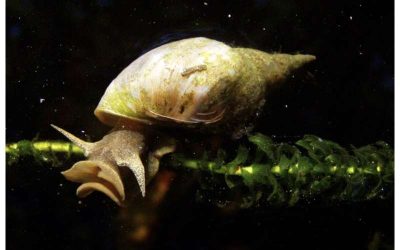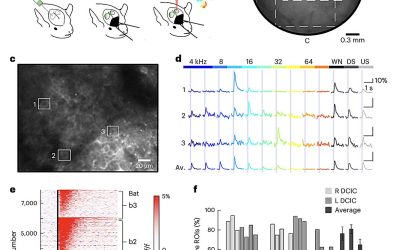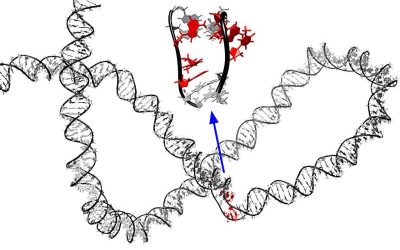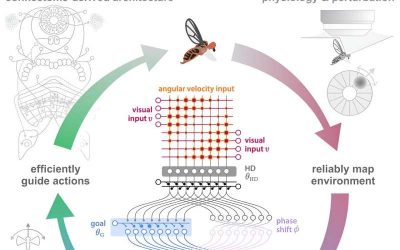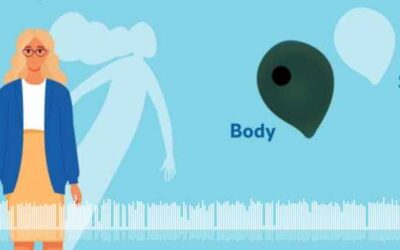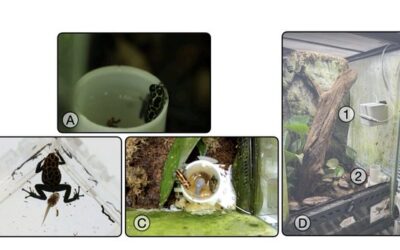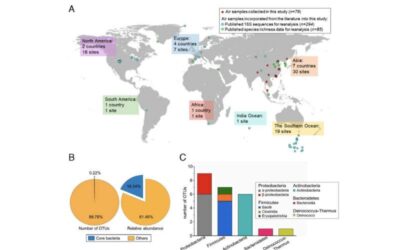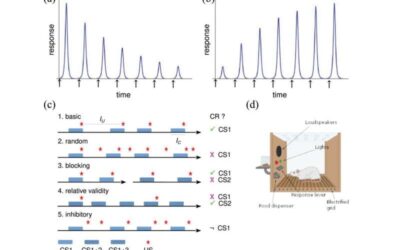Anxiety, the psychological and physiological state characterized by an anticipation of potential threats and a heightened sense of vigilance, is regularly experienced by many humans worldwide. Research suggests that anxiety is a behavioral consequence of stress,...
Biology
Clustered neurons in bat midbrain encode categories of vocalizations, study finds
The ability to quickly recognize sounds, particularly the vocalizations made by other animals, is known to contribute to the survival of a wide range of species. This ability is supported by a process known as categorical perception, which entails the transformation...
Molecular simulations provide new insights into the dynamics of supercoiled DNA
DNA (deoxyribonucleic acid), the molecular "blueprint" carrying the genetic instructions that influence the growth, development, reproduction and predispositions of individual humans, can undergo different types of mechanical stress inside cells. For instance, it can...
How fruit flies use internal representations of head direction to support goal-directed navigation
Animal behavior is known to rely on transforming sensory information into motor commands, often influenced by an animal's internal needs. While in mammals and other large animals this process is supported by complex brain processes, simpler versions of it might also...
The modeling and simulation of self-organized intracellular twisters in the Drosophila oocyte
Cytoplasmic streaming is the large-scale motion of cytoplasm (i.e., gelatinous liquid inside cells) inside a living cell. This flow, known to regulate various intracellular processes, can vary greatly between different cell types at different stages of a cell's...
Study gathers new insight about the evolutionary origin of vertebrate jaws
Jaws are bone- or cartilage-based structures that hold together teeth in the mouth of most vertebrates (i.e., all animal species with a backbone or spinal column). While these crucial structures have been the focus of numerous studies, their evolutionary origin and...
Dr Benjamin Scherlag | Could the Soul Be a Biophysical Reality?
The idea that human beings have souls that leave their body after death is an essential part of most religions and spiritual beliefs. However, this has been very difficult to prove scientifically. Benjamin Scherlag, Ronald Scherlag, Tarun Dasari and Sunny Po at the...
Studying the parenting behavior of poison frogs using tadpole-like robots
Over the past few decades, roboticists have developed robots inspired by a wide range of animals, including dogs, snakes, birds, spiders, bats, octopus, and different types of insects. These robots were primarily designed to tackle real-world practical problems, for...
Study unveils the compositions and origins of global airborne bacteria on Earth
Microbiomes, microorganisms that populate specific environments, are known to include both beneficial and harmful bacterial species. Understanding how destructive microbiomes originate in changing environments and their effects on both the environment and human health...
A new theory of learning integrates cognitive psychology and systems biology
Many neuroscientists, medical researchers and engineers specializing in artificial intelligence have been trying to understand the neural mechanisms underpinning learning. Although studies have unveiled some vital aspects of these mechanisms, numerous questions remain...

